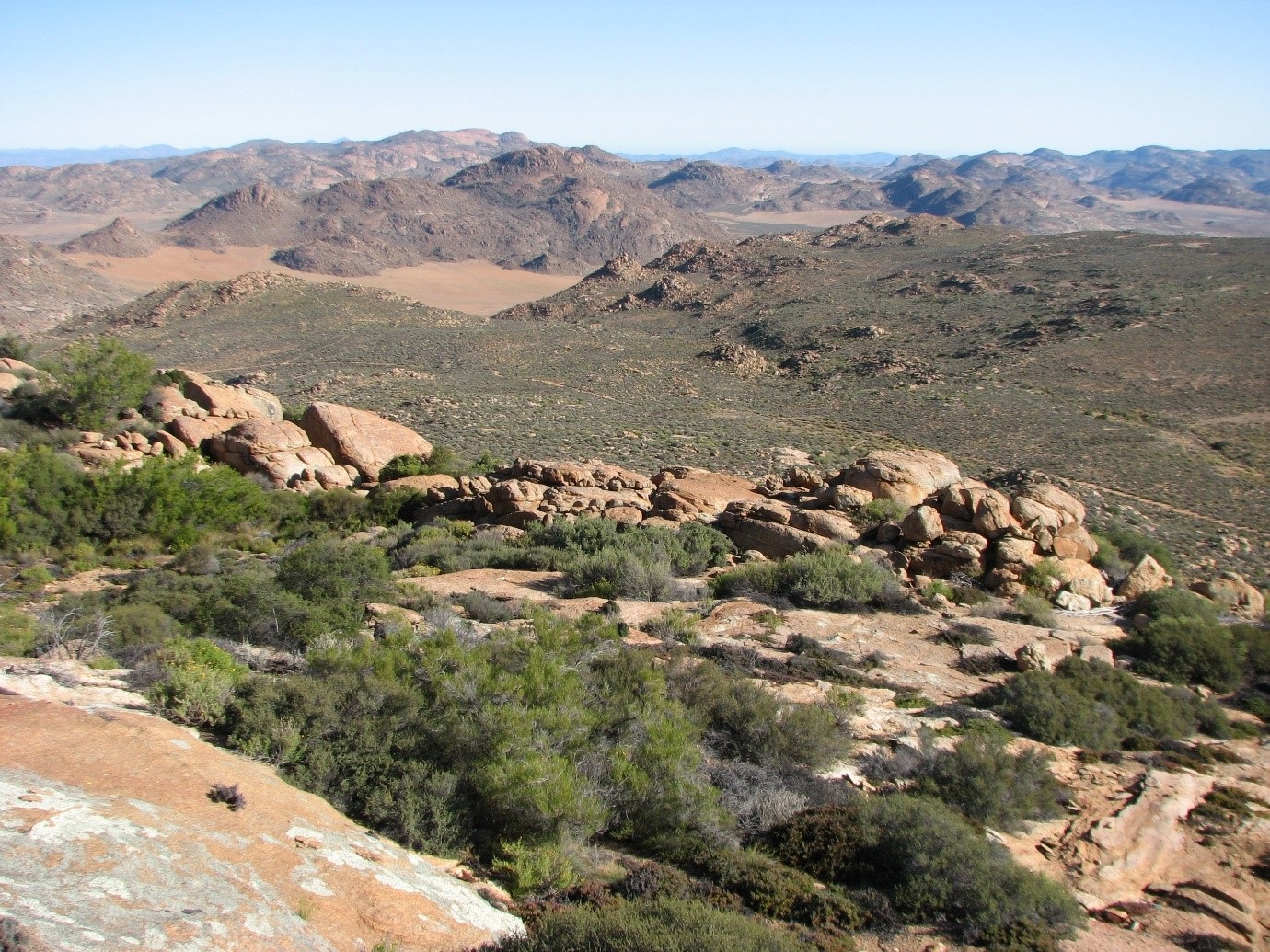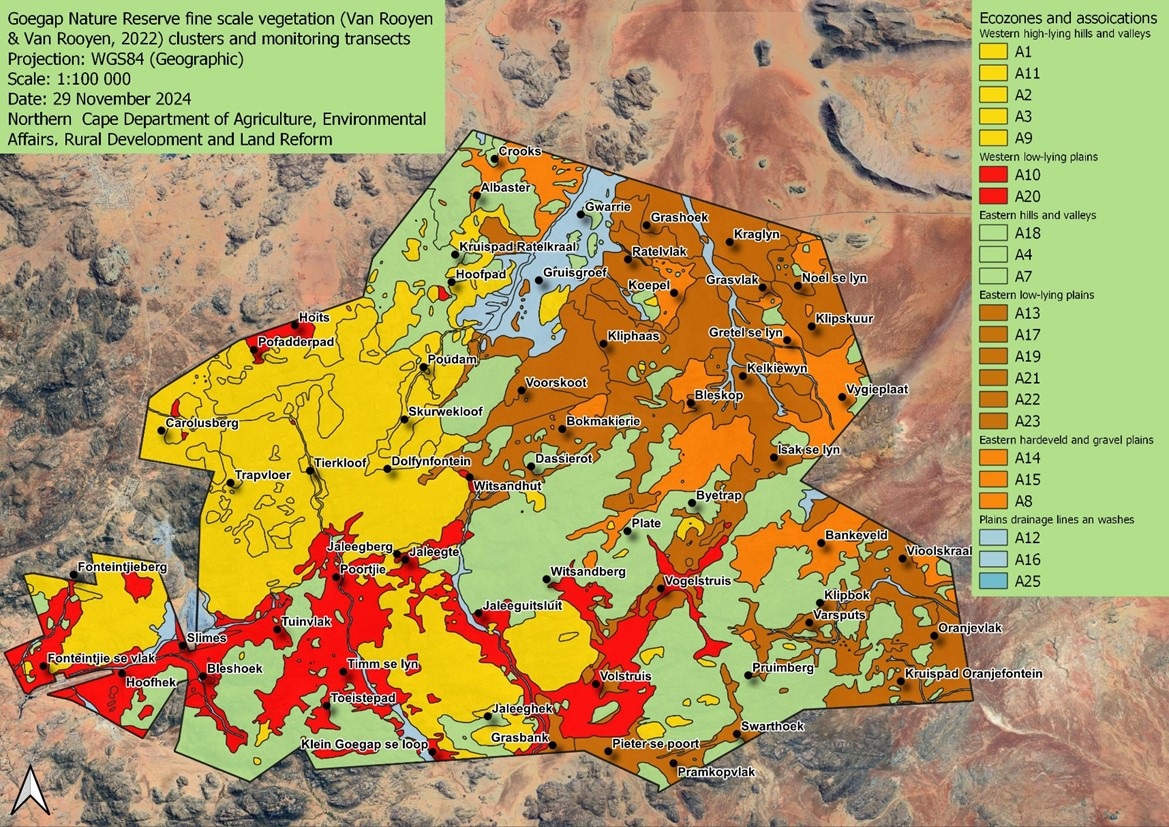
By Conrad Geldenhuys, Productions Scientist Grade C: Botanist
The Goegap Nature Reserve outside Springbok was established in 1966 as the Hester Malan Flower Garden through the erstwhile “Kaaplaandse Natuurbewaring”. Land for the reserve had been donated in 1960 by the local O’Kiep Copper Company mine towards a conservation area. Proper land management of the reserve was recognized from an early stage. The property had been subjected to intensive agricultural use in the past including heavy grazing and ploughing in some of the plains habitats.
To track the changes in rangeland condition and plant species composition, fixed monitoring sites were first established in 1974. The reserve gradually expanded over the years through new land additions in 1974, 1988, 2009, 2015, 2016 and 2020, with the reserve name changing to Goegap when a similarly named farm was added. With the increase in area size from 4 600 hectares to 23 859 36 941.10409 hectares additional monitoring points were established covering all of the conservation area.
Over the years a number of researchers, students, research organisations and state entities ensured the continuation of the research work. The list includes the “Kaaplandse Natuurbewaring” department initially and later the Northern Cape Environment/Nature Conservation Department in the various amalgamations it had with other government departments over the years (DTEC, DENC, DAERL). Other essential partners that ensured continuation and continuity were the University of Pretoria and the South African Environmental Observation Network. Today systematic ecological monitoring on the reserve consists of a number of management and research activities which includes: 69 vegetation monitoring line transects that are surveyed annually on a rotational basis, 20 exclosure plots that are surveyed every five years, annual fixed-point photography of habitats at selected points, annual game counts and continuous observations and recording of biodiversity occurrence by reserve staff.
Such a continuous record of ecological change is a rarity in ecological research, especially in the arid Karoo region of South Africa. These data sets are crucial to understanding the ecosystem dynamics of the Succulent Karoo biome and potential changes that could occur in the face of climate change. The research activities inform evidence-based government management (e.g. management of Goegap NR), but also eventually evidence-based policy decision making.
To highlight the importance of this site the Goegap Nature Reserve long-term vegetation monitoring project was listed by SAEON as an international long-term observation site with the ILTER initiative (International Long-Term Ecological Research) of which South Africa is part (https://www.ilter.network/network/global-coverage). The Goegap NR site description and registration is on the DEIMS-SDR platform (Dynamic Ecological Information Management System - Site and dataset registry) https://deims.org/3c1d1e1b-4ca9-4ab4-a83e-ceb510742832.
Apart from providing short term information on the sustainable ecological management of the reserve, scientific papers have also been published on changes observed at the reserve (links below). It is envisaged that the DAERL-SAEON partnership will be solidified in future through a formal Memorandum of Understanding in the near future.
https://doi.org/10.1111/avsc.12150
https://doi.org/10.2989/10220119.2018.1498802
https://doi.org/10.1016/j.jaridenv.2023.105093

